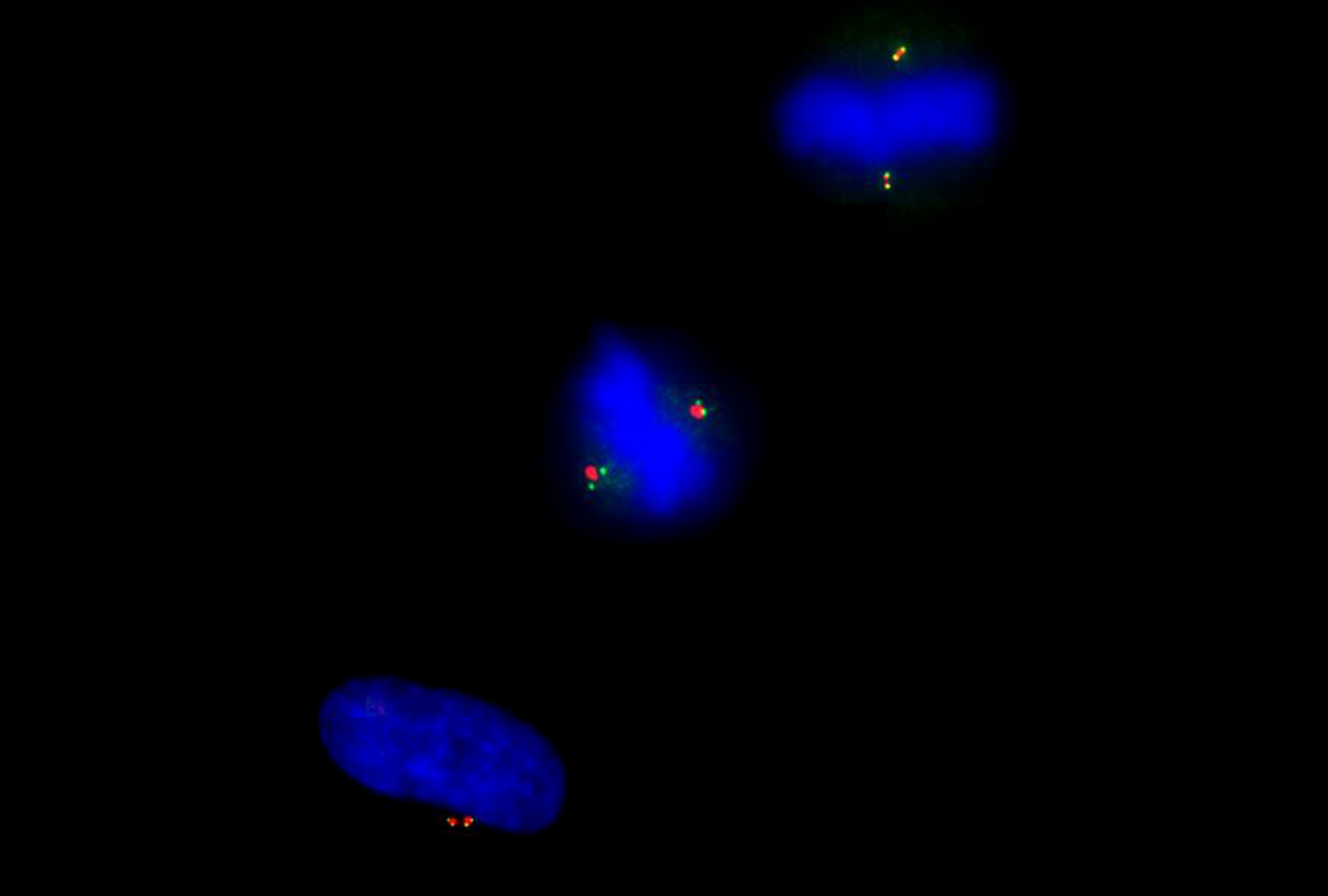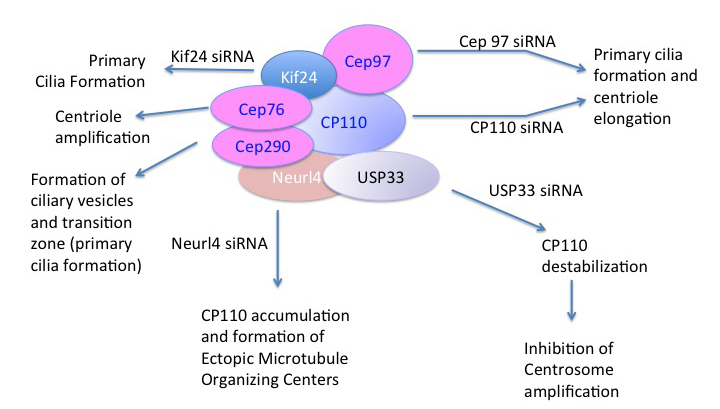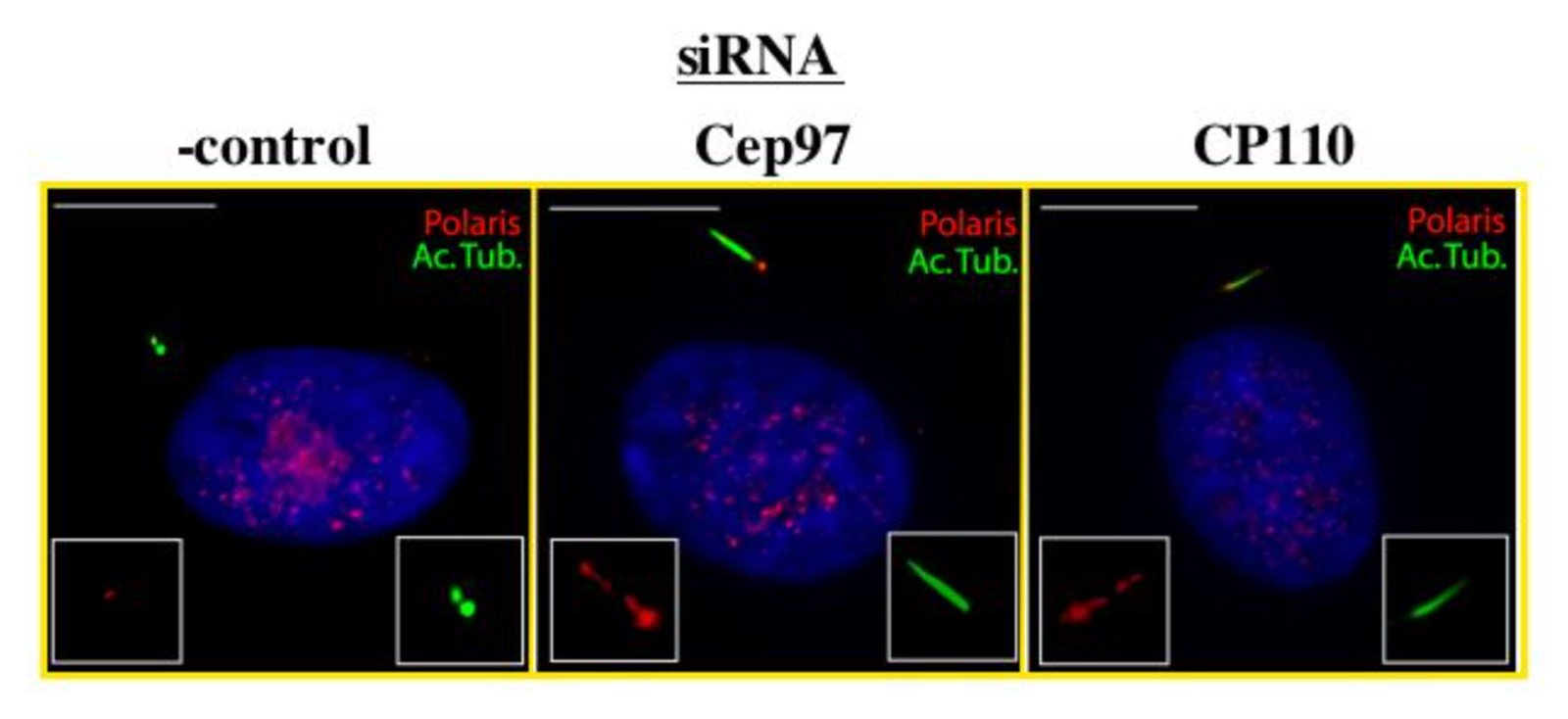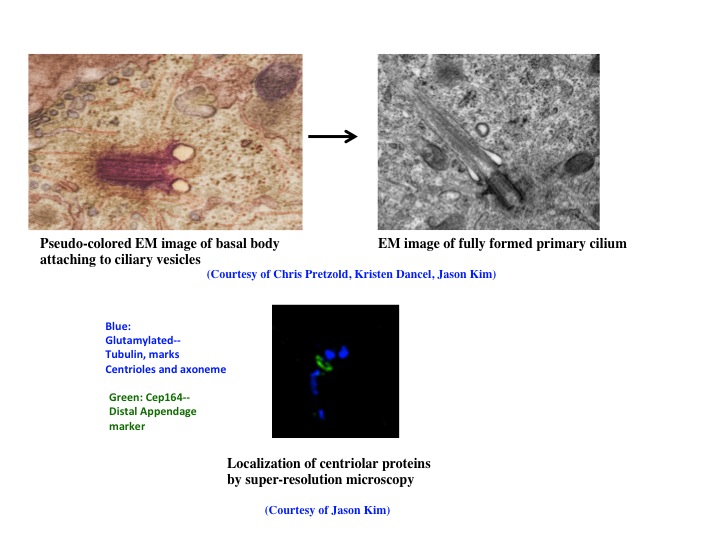
Centrosome and Cilia Biology
The Dynlacht Lab focuses on understanding the molecular controls that govern mammalian centrosome duplication, which plays a pivotal role in cell cycle progression and mitosis, as well as ciliogenesis. Centrioles are required to fulfill a number of important roles during the cell cycle, establishing a microtubule organizing center in interphase and ensuring high fidelity chromosome separation in mitosis. In addition, centrioles have the capacity to act as basal bodies that nucleate the assembly of cilia.
Although it was first described by Boveri over one hundred years ago, the centrosome has proven to be enigmatic, and the controls that determine how and when centrosomes replicate are poorly defined. Further, while controls must be in place to regulate different centriolar fates—microtubule organizing activity in growing cells and primary cilium formation in quiescent and differentiated cells—key components that determine their fate remain largely undefined. About a decade ago, we identified a protein, CP110, that plays a key role in centrosome duplication and cytokinesis.

Remarkably, CP110 also plays a pivotal role in regulating centriole length and the onset of ciliogenesis. We have subsequently used biochemical approaches to purify complexes associated with CP110 and identified a cohort of novel centriolar proteins, including Cep97, Cep76, Neurl4, and Kif24, among others.

Depletion of Cep97 by RNAi or expression of dominant-negative mutants leads to CP110 displacement from centrosomes, mitotic spindle defects, and cytokinesis failure. Strikingly, loss of either Cep97 or CP110 resulted in primary cilia formation in cycling cells suggesting that Cep97 and CP110 work together to inhibit assembly of primary cilia in growing cells, when free centrioles are needed to ensure assembly of a mitotic spindle and chromosome segregation.

The primary cilium is a remarkable and relatively poorly understood antenna-like organelle required for critical signal transduction pathways involved in normal cell proliferation and development. Loss of primary cilia plays a role in a host of human ciliary diseases, including retinal degeneration, renal disease, and a plethora of developmental abnormalities. Our ongoing, detailed characterization of CP110, Cep97, and other genes involved in key centriolar processes will enrich our understanding of the basic processes of centrosome duplication and ciliogenesis and shed light on human disease mechanisms associated with centrosomal and ciliary defects, enabling novel therapeutic strategies. We have employed state-of-the-art cell biological approaches, including electron microscopy (EM) and super-resolution microscopy, to study the localization of the cadre of CP110-interacting proteins and determine the biological impact of their ablation.
